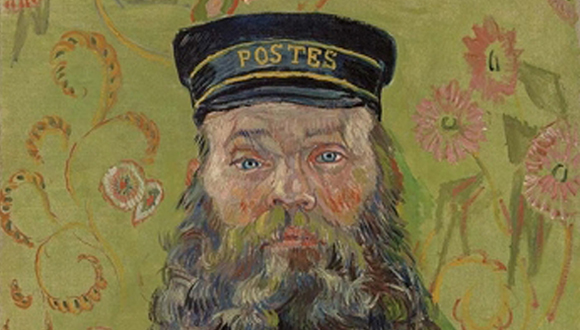The Barnes Foundation in Philadelphia showcases organizational transformation
Failure as a non-option

Vincent van Gogh, The Postman, 1889. Image © 2015 The Barnes Foundation.
Enduring turmoil and controversy between 2002 and 2004 surrounding its legal challenge to move the Barnes collection from Merion to Philadelphia, Pennsylvania, and by subsequent lawsuits and protests, the Barnes Foundation’s projected 2012 opening of a new campus in Philadelphia seemed daunting. But the newly expanded Board of Trustees and the newly appointed executive team were determined to raise $200 million to build a new building, move the collection, and establish an operating endowment, while simultaneously recruiting and retaining a distinguished, committed staff to lead all artistic, programmatic and business functions of the 90-year-old start-up.
Diana Duke Duncan joined the Barnes Foundation in 2008 as Senior Vice President for External Affairs, following the 2006 appointment of Derek Gillman as Executive Director and President, and the 2007 selection of architects Tod Williams and Billie Tsien and landscape architect Laurie Olin. Fast forward seven years—the Barnes in Philadelphia opened in 2012 on time and under budget. At the time of the opening, the organization was debt-free, and had already implemented a balanced five-year operating budget. In addition, the Barnes achieved scholarly, popular and press acclaim for its five published catalogues, two special exhibitions, and for the new Barnes Foundation campus itself.

The Barnes Foundation at night
In 2013–14, the Barnes presented four more exhibitions and published four more catalogues, deepened its community engagement through a Free First Sundays initiative and a Community Program Advisory Committee, and welcomed almost 300,000 visitors each year. In 2015, the Barnes is artistically vibrant and financially stable, with an operating budget of $19.6 million and an endowment of $68 million. Achieving the move’s top priority, the Barnes is accessible to communities globally.
The transformative force behind the scenes
During her tenure, Diana was instrumental in exceeding a $200M capital campaign goal, while implementing capacity-building strategies, decisions and plans of action utilizing an External Affairs management model. The EA staff grew from 12 (2009) to 35 (2013), stabilizing at 32. As a result, from 2012-14, the External Affairs team delivered, on average, 80 percent of annual operating revenues through contributed and earned revenue, while cultivating a new culture of individual giving and maximizing institutional gifts and sponsorships. This effort made possible increases in the annual operating budget from $6 million (2009) to $19.6 million (2015). Even more importantly, results of the seven-year emphasis on individual giving serves as lead generation for the pending comprehensive campaign for endowment and operating resources.
From fine tuning the visitor experience and collection safety, to achieving admissions-related earned revenue in carefully controlled, limited-space galleries, Diana helped balance competing priorities. Because External Affairs promoted transparency and consistent internal communication, Diana and the executive team were able to identify scholarly, educational and community engagement programs far enough in advance to secure philanthropic and sponsorship support. Diana also fostered the alignment of institutional priorities between the Barnes’ Board and staff.
Results that warrant positive press
On top of achieving or surpassing all of its financial and organizational goals, the opening of the Barnes in Philadelphia rought a flood of international coverage. It began with a Vanity Fair article by architecture critic Paul Goldberger. Goldberger was the first to point out how light changed the visitor experience. “There is no question that the paintings are more visible in their new home; they look better in every way, and they are likely to be far better cared for in a modern, humidity- and temperature-controlled environment. You may or may not believe that visitors fare better in the new Barnes. But you cannot dispute the fact that the Cézannes and Renoirs and Matisses do.”
On May 13, 2012 Jerry Saltz and Justin Davidson published a pair of stories in New York Magazine. Saltz closed his piece by saying, “The move of this singular jewel in the crown to a more accessible location, into a far better-equipped, much more flexible building, allows this monumental testament to art’s possibilities to shine forth more magnanimously and generously than ever before. When art wins, everyone wins.”
In June, 2012, Martin Filler weighed in with a piece in the New York Review of Books, “Nothing less than a latter-day miracle—a wholly unexpected and an unbelievably lucky one at that—has occurred in Philadelphia, where the most acrimonious and protracted power struggle in the recent history of art collecting has finally come to a glorious and uplifting conclusion. The opening this spring of the long-anticipated new gallery of the Barnes Foundation Collection, the finest concentration of French Impressionist and Post-Impressionist painting in the Western Hemisphere, has been a triumph for all concerned.”
Barnes Foundation—Stats and Tactics
Donor Type Comparison, Breakdown by Percentage of Total Given For years 2014, 2013, and 2009

Tactics for achieving sustainable growth
- Offer experiences that are truly unique and tailored to your audience.
- Get your resources right. The Barnes External Affairs team struck the right balance across its dedicated team of relationship-builders and data analysts, using best practices of donor management and prospect coordination, while influencing institutional knowledge-sharing through open source CMS communications.
- Invest in systems integration that supports data-driven decision-making, an integral piece to your strategic approach to membership and audience development.
- Leverage a visitor-to member-to donor continuum if it makes sense for your organization. Using this approach, between 2009 and 2012, the Barnes grew individual membership from 400 to 25,000 households—and institutional memberships and sponsorships from 12 to 100.
